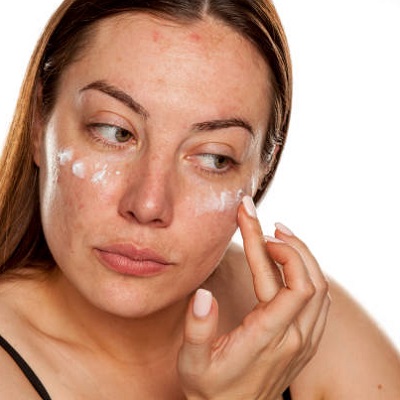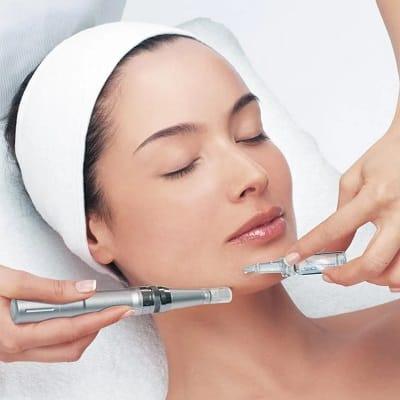Melasma in islamabad is a common skin condition that affects people of all backgrounds, but it predominantly occurs in females, especially those with darker skin tones. However, melasma can also affect males. This skin condition is characterized by brown or greyish-brown patches on the face, typically on the cheeks, forehead, nose, and upper lip.
To effectively manage melasma, it is crucial to understand its causes and risk factors, whether you’re male or female. In this blog, we will delve into the causes of melasma in both genders and explore why it impacts females more frequently.
What is Melasma?
Before we explore the specific causes of melasma, it’s essential to have a basic understanding of the condition itself. Melasma is a form of hyperpigmentation involving the darkening of some skin regions.
This occurs due to the overproduction of melanin, the pigment responsible for skin colour. Melasma patches can vary in size and shape, and their appearance is often triggered or exacerbated by exposure to ultraviolet (UV) light.
Causes of Melasma in Males and Females:
Hormonal Changes
One of the primary causes of melasma is hormonal changes, which affect both males and females. Hormones play a significant role in regulating melanin production. In women, melasma is often associated with pregnancy, oral contraceptive use, and hormone replacement therapy. During pregnancy, elevated levels of estrogen and progesterone can stimulate melanocytes to produce more melanin, leading to melasma.
In males, hormonal imbalances, such as those seen in conditions like hypogonadism or anabolic steroid use, can also contribute to the development of melasma. While hormonal fluctuations are a common trigger for melasma in both genders, it is more prevalent in females due to the hormonal changes associated with pregnancy and oral contraceptive use.
Sun Exposure:
Exposure to UV radiation from the sun is another significant cause of melasma in both males and females. UV rays stimulate melanocytes to produce more melanin as a defence mechanism to protect the skin from further damage.
Melasma patches often darken and become more pronounced with sun exposure. That’s why individuals who spend significant time outdoors without adequate sun protection are at a higher risk of developing melasma.
Genetic Predisposition
Genetics also plays a role in the development of melasma. If you have a family history of melasma, you are more likely to develop the condition yourself. While genetics can predispose both males and females to melasma, it is essential to remember that not everyone with a family history of melasma will necessarily develop the condition.
Skincare Products and Procedures
Certain skincare products and procedures can exacerbate or trigger melasma. Using abrasive exfoliants, chemical peels, and laser treatments without proper precautions can stimulate melanin production and worsen existing melasma. It’s essential to consult with a dermatologist before undergoing such treatments, especially if you have a history of melasma.
Medications
Some medications can contribute to the development of melasma in both males and females. These include certain antiseizure medications, non-steroidal anti-inflammatory drugs, and phototoxic medications. If you suspect that your medication may be causing or worsening melasma, consult your healthcare provider to explore alternative options.
Cosmetics and Perfumes
Certain cosmetics and perfumes contain ingredients that can make the skin more sensitive to UV radiation. Fragrances like musk and bergamot, as well as some skincare products, may contain photosensitizing compounds. Over time, using such products without adequate sun protection can lead to the development or worsening of melasma.
Why is Melasma More Common in Females?
While melasma can affect males and females, it is far more prevalent in women. Several factors contribute to this gender discrepancy:
Hormonal Factors:
As mentioned earlier, hormonal changes, particularly those related to pregnancy and oral contraceptive use, are significant triggers for melasma. Since these hormonal fluctuations are exclusive to females, they are more likely to develop melasma.
Makeup Usage:
Women are more likely to use makeup and cosmetics, which can contain ingredients that make the skin more sensitive to UV radiation. Combined with hormonal factors, this can increase the likelihood of melasma development.
Skincare Routines:
Women tend to have more elaborate skincare routines, including exfoliants and other products that can irritate the skin or trigger melasma without proper sun protection.
Genetic Factors:
Genetics can also play a role, with some individuals genetically predisposed to melasma. Since women are more likely to discuss skincare and beauty routines with their peers, they may be more aware of the condition and seek treatment.
The Bottom Line!
Melasma is a common skin condition that can affect both males and females, although it is more prevalent in women due to hormonal factors and societal influences. Understanding melasma’s causes and risk factors is essential for effective prevention and management.Both genders should protect their skin from UV radiation, use skincare products cautiously, and be aware of any medications or hormonal changes that may contribute to melasma. Consulting with a dermatologist at Enfield Royal Clinics Islamabad for a personalized treatment plan is crucial if you suspect or are dealing with melasma, regardless of gender, ethnicity, or background.










Leave a Reply